To book an appointment online please choose from the options below
Your baby boy is going to have his circumcision. This operation involves removing the foreskin (prepuce) of the penis.
Worldwide, circumcisions are most commonly performed for religious or cultural reasons. These circumcisions may be performed by obstetricians, religious representatives or general/ urological/ plastic surgeons.
The hospital offers an outpatient and an inpatient service for neonatal circumcision (babies up to the age of 8 weeks) performed by a paediatric urologist.
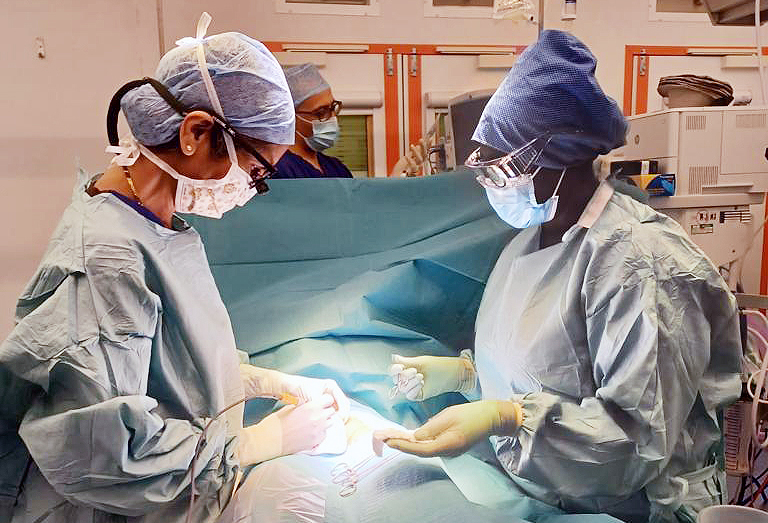
We take every measure to ensure that the circumcision is as pain free as possible.
This is a very important aspect of your baby’s circumcision.
A local anaesthetic cream is applied to the base of the penis to numb the skin. It takes between 20 to 40 minutes for the cream to start working. This will be applied on your arrival on the day of the circumcision. After this a local anaesthetic will be injected prior to the circumcision through the numbed skin and will minimise your baby’s pain as the injection needle is introduced.
In our experience this offers a very satisfactory level of pain relief allowing the surgeon to perform the circumcision without causing any discomfort to your baby.
Babies are cuddled and held by experienced and skilled nurses from the operating theatre.

The plastibell (a ring shaped plastic device) will be used for your baby’s circumcision.
This comes in different sizes as shown below.
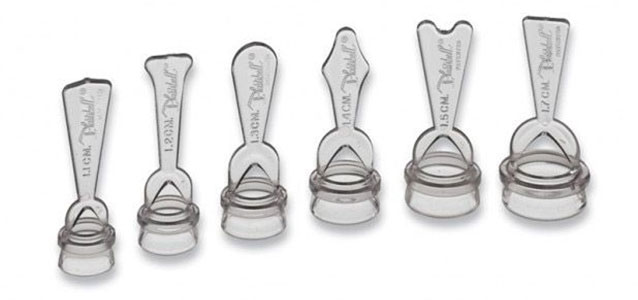
The following narrative refers to the diagrams shown below:
1. Separation of inner foreskin from the glans (head of penis) all around
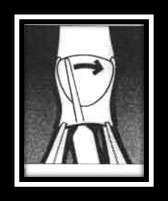
2. Making a cut in the foreskin
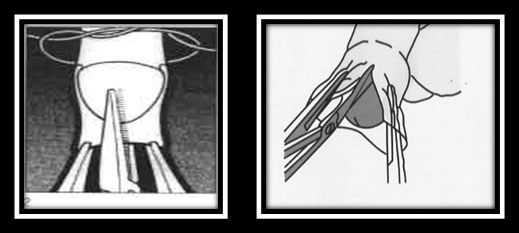
3. Pulling back the foreskin to expose the glans
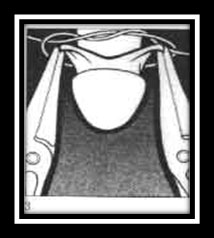
4. Placing an appropriate size of plastibell ring like a shoe size but slightly loose to allow easy falling off and drawing the foreskin over it And placing a ligature (thread) in the groove on the plastibell
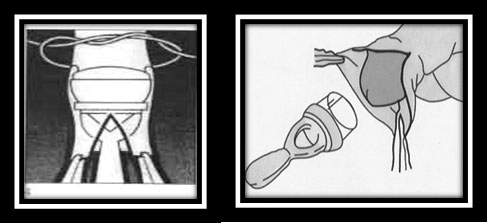
4a. Removing the prepucial skin beyond the tied thread with a scissor
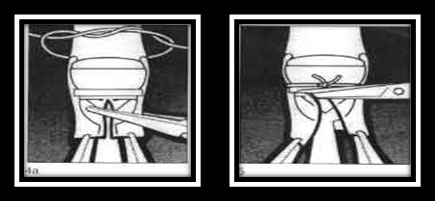
5. Breaking the handle of the plastibell leaving the Plastibell ring with a ligature on the skin
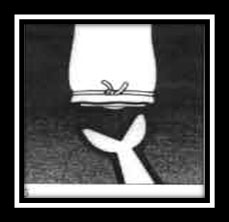
6. A rim of skin is left to avoid the ring falling off now. The broken handle of the plastibell device
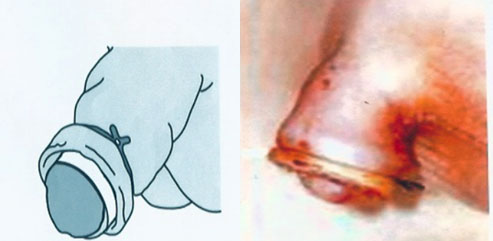
7. This will gradually turn black and shrivel like the umbilical cord.
8. The penis above the circumcision site, in the diagram, will look slightly swollen and red until the ring falls off
8a. The plastibell device usually falls off on an average after 8 days (range 1 to 11 days) and it starts by splitting at the ligature level
9. The appearance of the penis after the ring falls off

9a. When the device falls off, the circumcision site will not look healed. For the penile appearance to return to normal (swelling and healing) it may take about 3 to 4 weeks in total.
The plastibell circumcision is a relatively safe procedure but there are potential complications in the range of 1-2% such as:
This is seen as spotting in the nappy. This spotting is entirely normal and happens as the circumcision involves separating the inner layer of the penile skin from the tip (head/ glans) of the penis. If you see continuous drops of blood contact us to bring your baby to Portland or Cromwell hospital (where your baby was circumcised) or take your baby to your nearest/local hospital emergency department if you live further away from these hospitals.
This may occur if the plastibell is too small or too large. If there is swelling of the tip of the penis and your baby is uncomfortable contact us.
After the ring falls off it can take about 3 to 4 days for the swelling in the penile skin to go down. After the swelling resolves the skin on the penis can move forwards onto the head of penis or beyond. This mobility of penile skin is entirely normal as this is how it is normally. However after circumcision it may stick to the head or heal in a position beyond the head of the penis. This will lead to a narrowing of the opening in the penile skin and lead to inability to go back over the head of penis backwards necessitating a revision circumcision under a general anaesthetic.
It is therefore important to pull back the penile skin towards your baby’s body in order to expose the whole of the head of penis (till you see the neck of the penis) merely exposing the tip of head of penis will not allow sufficient opening to allow satisfactory retraction of skin.
In the majority of cases residual excess skin is only slight and readjusts as your baby will grow.
The unequal inner and outer prepuce will not affect the function but parents may wish to book a consultation to discuss the options of revision circumcision if they so wish for cosmetic reasons to be carried out when baby is much older and under a general anaesthetic.
This is very uncommon as I haven’t seen one for several years
Audit of the baby circumcisions done by Mrs Patil in The Portland hospital over the year 2012 shows that there were no readmissions for bleeding, infection or other skin related problems like excess residual skin left or any excess skin removed. There were 2 babies who needed removal of the plastibell ring as the ring failed to come off on its own.
Audit of the 115 babies circumcised shows that 7 (5%) parents either called via telephone or came for followup.
Of the above 7, only 2 babies required retracting the penile skin adhesion to glans without an operation. The remaining 5 required reassurance only as there were no problems.
A routine follow-up is not routinely done as majority of babies do not require it but is possible and you may discuss these arrangements with your consultant.
Please fill in the form below to send us your enquiry
Second opinion becomes a second chance for patient.
Call Us : 07791 916653




